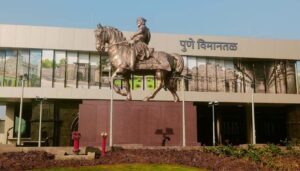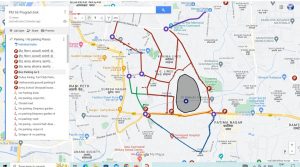Transparency in the functioning of Railways
A K Saxena
Indian Railways is on a path of modernization and infrastructure development in a big way. This primordially requires that corruption is fixed at zero to ensure that not only the Ease of Doing Business is enhanced but also to bring in due and utmost diligence at all levels. Transparency in working is increasingly being viewed by the Indian Railways as one of the primary tools not only to address persistent complaints and accusations against service delivery in the public but also to ensure that role of discretion is wrested out of both decision making as well as service delivery ends. In this direction, the Indian Railways have taken noteworthy and path-breaking steps in the field of attaining transparency in its entire functioning. Minister of Railways Shri Suresh Prabhakar Prabhu has always assigned highest importance to the eradication of corruption and has been emphasizing on improving transparency, efficiency and productivity in the functioning of Indian Railways. On the very first day of assuming office, Shri Prabhu spelt out his commitment towards transparency loud and clear through firm orders that no file relating to tenders shall need his approval and forthwith issued orders for decentralization, delegation of powers to field functionaries of Indian Railways.
Indian Railways handles approximately 25,000 works Tenders annually involving an expenditure of above Rs. 35,000 Crores every year for maintenance/upgradation of existing assets and creation of new assets for huge railway network of about 66,000 Route Kilometer. From simplification of administrative procedures to ensuring accessibility of procedures through publication of the procedures on the organization’s web-portals, the Indian Railway has been reiterating its commitment to transparency in its decision making systems and in various implementation processes, more predominantly in its material management segment. Some of the recent noteworthy initiatives of the Indian Railways to transform the way it engages with citizens, businesses and other stakeholders is by creating Information and Communication Technology (ICT) based interfaces as mentioned below. Interalia, the main upsides of e-governance includes building in a responsive environment; making the Ease of Doing business for all stake-holders including Start-ups, Entrepreneurs, Financial Lenders hassle-free and efficient services, besides primarily alleviating the concerns of the common man so that his voice is not lost to Corruption.
Transparency in Procurement: Procurement of Goods above Rs 1 Lakh is by E-Procurement
A marked beginning was made when ‘Indian Railway E-Procurement System (IREPS) was rolled out in headquarters of Zonal Railways and Production Units in 2011-2012 for procurement of goods. Transparency in public procurement being a thrust area of the Government, Indian Railway has expanded IREPS to cover all Divisions, Depots and Workshops in 2015-16. Now, procurement of goods above Rs 1 lakh is by e-procurement across all Divisions and Depots, besides headquarters of Zonal Railways and PUs. With this, IREPS has become the largest e-procurement platforms in India based on number of tenders handled, procuring material worth more than Rs 50,000 Crores (2014-15). In the ten months of current financial year (from April 2015 to January 2016) alone, 2.35 Lakh stores tenders have already been published in IREPS, which marks a whopping 90% increase over the same period in 2014-15. The system today has more than 29,000 vendors registered on the system.
E-Auction System for Removal of Scrap: Digital e-payment of earnest money (EMD) results in purchaser’s interaction 100% online
Another important step towards transparency is switch to 100% e- auction in its sale of scrap. E-auctions are fetching revenue of above Rs. 3000 Crores annually (2013-14 and 2014-15). E-auction has enabled prospective scrap purchasers to bid simultaneously on an all India basis with digital comfort. Digital e-payment of earnest money deposit (EMD) for auction on an all India basis has further made the purchaser’s interaction 100% online. E-auction is now proposed to be used for leasing of parcels and other commercial contracts also.
Works Contract Included in IREPS
In order to bring transparency and efficiency in Works Contracts of Indian Railways, Minister of Railways Shri Suresh Prabhu recently inaugurated and launched Works Module of Indian Railways E-Procurement System (IREPS) expanding the ‘e-Tendering to all type Works Contracts’. This Portal enables railways to implement e-governance in Works Contract with facilities like creation and publication of tenders online, enable tenderers to view tenders, submit their requisite amount and bid offers online. It will also facilitate instant online creation of comparative chart and briefing note. This new Portal will lead to reduction in hassles related to tendering process, saving in cost and time, increase in ease of working, increase in efficiency, increase in competition, reduction in complaint related to tendering and easy access to information. This portal has also introduced new concepts like online creation and maintenance of SOR (Schedule of Rates) and Non-Schedule directories, standardization of tender conditions and interactive documents and better document management system.
E-tendering as a Win-Win Initiative: Reducing Cost of Transaction and Time Lags, Ensures Level-playing field to all Bidders
Expanding e-procurement to reach the dream of Digital India, in the year 2015, Railways has started paperless settlement of tenders by expanding the scope of e-procurement. Not only the tenders are floated and opened online, the internal processing of tenders also is all done electronically online. This has enabled vendors to get the contract acceptance electronically. Thus, vendors are assured of transparent system not only in submission of their offers but also in viewing the tabulated offers of all bidders and also the letter of acceptance for the contracts as they are all electronically generated.
E-Procurement has not only resulted in complete transparency but has also reduced transaction costs and distance barriers but has enabled Startups, Entrepreneurs, Micro and Small Scale Industries engage effectively in procurement process of Indian Railways.
Recruitment on Indian Railway Moves to IT platform Not only to Purge Role of Middlemen but Also to Ensure Nil Disparities in Access to Employment Opportunities
As a major IT initiative, system of online applications was introduced for exams undertaken for recruitment of Group ‘C’ officers. Moreover, online examination was also introduced through RRBs. This has brought transparency and certainty into recruitment process for better efficiency and substantial savings in cost and resources. Question papers, answer sheets and answer keys for SSE/JE examination 2015 have been uploaded on RRBs’ websites providing an opportunity to the candidates to view their performance and to submit any objection. Candidates were also apprised of this facility through individual emails/SMSs.
Facilitative E-Catering Arrangements Ensures All Vendor Information Pertaining to Brand, Seller, Rates, Variety Available to Passenger
The facility of E-catering is another good initiative taken by the Railways where users have a very transparent system available to book their meals for delivery at their respective seats. They are now sure about the brand, seller, variety, rates etc. with no scope of being misled. The Railway Minister has also decided to set up an independent regulator to bring in transparency in tariff determination, in benchmarking performances and in ensuring level playing field to the private players.
Ticketing Segment Reforms through Increasing Speed of Booking Tickets and through launch of Hand-held Terminals
The multi-fold speed increase of online ticket purchase through the New Generation E-ticketing and automatic elimination of multiple booking through fake IDs are some of the initiatives taken to increase ease of getting e-tickets online. Thus E-ticketing adds to transparency in the sale of tickets. Now, the Ministry has also started selling tickets after the preparation of chart from any PRS counter or from online besides purchasing from the current PRS counter which is again a very transparent act for making tickets available to genuine passengers.
The pilot project of Hand-held Terminals on Northern Railway was recently launched to plug possible holes in ticketing segment. Envisaged to make real-time information accessible, the Hand-held Terminals also enables the Railway to obviate inequities in on-board accommodation allocation. With the help of Hand held Terminals for TTEs, after all allotments, remaining vacant berths will be sent back to HHT Application Servers and can be viewed on PRS terminal as well as website (indianrail.gov.in) and information of all NT passengers will be sent to coaching refund system to get speedier refund and eliminate the preparation of manual Exception Data Reports (EDR). Occupancy chart can be viewed on HHT device to dispense with the manual preparation of food-chart/occupancy chart. The main spinoffs of the Project include Revenue Yield Maximization, by making onboard accommodation availability visible to downstream Stations so that they can do current bookings against these vacant seats, realizing additional revenue against the same as presently these seats usually go vacant up to the terminal stations due to non-availability of this information with the prospective Passengers.
Decision for Development of Joint venture Projects Take off Within a Year
Pending for the past 12 years, the decision for Development of Electric Locomotive Factory at Madhepura and Diesel Locomotive Factory at Marhowra – Bihar Project under the Joint Venture route took off within one year. The formal contract agreements for the two Rs.40,000 crores High Horse Power HI-TECH best-in-class modern locomotive Joint Venture factory projects (Electric Locomotive Factory at Madhepura and Diesel Locomotive Factory at Marhowra – Bihar) were signed by the Railway Ministry with the two JV partners – namely a France–based Company M/s Alstom Manufacturing India Limited and with a USA–based Company M/s GE Global Sourcing India Pvt. Limited. These two factories are joint ventures (JV) of the Ministry of Railways. The fair, transparent and competitive bidding process adopted in selecting the JV partner received wide-spread appreciation from all stakeholders. It is envisaged that these projects will usher in new technologies into the Indian industry at large through high paced indigenization.
Social Media as a Tool to Enhance Responsiveness of Railways
The Railway Ministry has strengthened its social media tools in a big way. Its presence on Twitter is enormous and widespread. Leading from the front Railway Minister Shri Suresh Prabhakar Prabhu, a Twitter-savvy user, has directed General Managers and Divisional Railway Managers of Indian Railways to open their individual Twitter handles. The Twitter handle of Ministry of Railways namely @railmin.india is a very popular Twitter handle of the Ministry and has more than one million followers with three thousand followers getting added every day. The Twitter handle of the Railways have become powerful tool to provide assistance to passengers in moving trains and at stations. Through this handle, along with the helpline numbers 138 and 182, the Railway Administration has reached out to passengers to address their urgent problems while on the move. It has now emerged as a very transparent and efficient system of providing relief to the passengers on a real time basis.
Digitization of Land Records of Railways: Preventing Encroachment on Railway Land and Minimize Scope of Litigation
Indian Railways has already completed most of work related to digitization of land records i.e. maintaining land data (details of acquisition/area/usages and land plans) in digital form. Indian Railways have also digitized details of vacant plots of land measuring more than one acre to chalk out the blue print for monetization of its vacant land. Besides enabling the respective State Governments in the process of ascertaining/establishing conclusive land titles of other bodies, individual land owners or joint owners, this also enables the Railway to utilize the vacant railway land for execution of various infrastructural projects for meeting future growth needs of Railways and includes projects like doubling/tripling and traffic facilities works, etc. and also enable it to utilize vacant land wherever feasible for additional financial resources.
Measures Taken by RDSO for Transparency In Vendor Development, Product Inspection & Material Procurement
Transparency and Accountability are twin facets to ensure responsible organizational governance. The R&D organization of Indian Railways, the RDSO, which has a considerable material management segment, has been undertaking a slew of measures in ensuring transparency at all levels of functioning. Periodical publication of Expression of Interest (EOI) is floated for multi-sourcing of the items to avoid cartelization. RDSO has completely switched over to e-tendering even in its Reverse Auction process. So far RDSO has floated 1574 E-tenders. This has resulted in better and fair competition amongst the suppliers. Facilitative Vendor transactions through On-line Vendor Approvals, On-line Product Inspection Monitoring System has resulted in hassle-free procedures for vendors (as applicants) while also bringing in total transparency in inspection process. The establishment of a separated Quality Assurance department in the RDSO along with detailed specifications and Schedule of Technical Requirements (STR) on the web-portal with downloadable facility ensures transparency and definitive decision- making of authorities. On-line Production Monitoring System provides on-line the details to zonal railways regarding wagon manufacturer and details of bogie, coupler, brake, CTRB, wheel-sets etc. it Quality Audit of Vendors has been simplified by dispensation of type tests and only firm’s compliance to STR and Quality Assurance Procedure is verified. Some of the other standardization measures to empower all its stakeholders and strengthen participative democracy include Random sampling and inspection, Use of Holograms on inspected material, Vendor Support Cell, fixing and specification of Validity of Inspection Certificate eliminating room for discretion.
(The writer is a senior Press Information Bureau (PIB) Officer, New Delhi)








